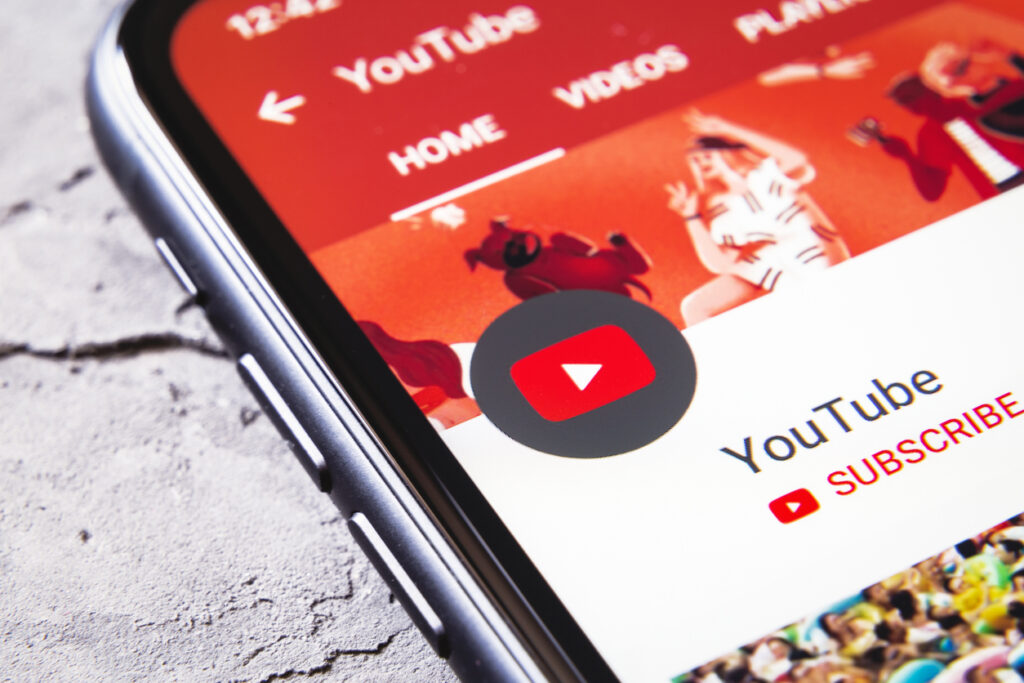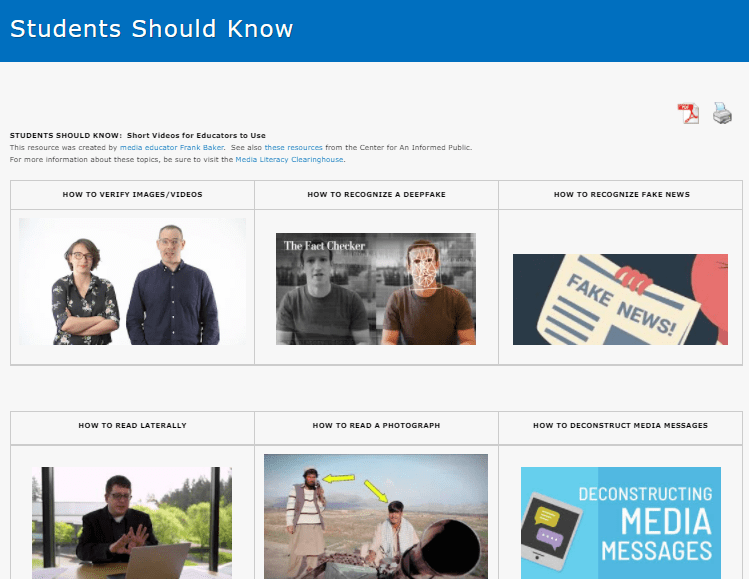This blog post by NCTE member Frank Baker appeared originally on the Media Literacy Clearinghouse and is reprinted with permission.
We all must know by now that YouTube is where young people are spending a lot of their time. A 2020 survey found they spend almost 90 minutes a day on the video streaming platform.
With millions of viewers daily, it’s no wonder that advertisers and influencers want to reach audiences using YouTube.
I am a fan too, having used it primarily lately to locate and watch outdated TV shows or interviews.
As a media educator, I want to inform readers about some content they might not already be aware of: media literacy resources.
Name a topic, related to media literacy, and you’re bound to find plenty of videos—not all of them good unfortunately, but that’s another story.
I recently created a web page entitled STUDENTS SHOULD KNOW, with my curated list of YouTube videos that could and should be considered by educators to help students get “up to speed” on many topics and concepts. As of this writing, the site contains almost 60 videos.
This list resulted from much of my previous media literacy workshops with educators in which I engage them in media literacy, visual literacy, advertising and moving image education. With the rise of social media and its influence on young people, additional resources were added.
One of my goals and objectives here was to offer educators a REAL look at what media literacy is, because lately the media has confused it with information literacy or news literacy. (You may still be confused.)
When Donald Trump first ran for President, he accused the media of being “fake news”—which in reality meant he did not trust the sources or those reporting the news. His repeated use of the phrase changed the meaning of what we all previously understood to be “fake news.” And if you read any news story about fake news (which I did and posted here), you would have read that reporters were recommending that more media literacy be taught.
One of the earliest videos I used in my media literacy workshops (and uploaded to YouTube) was an excerpt from a 1989 HBO special entitled “Buy Me That”—in which producers pulled back the curtain on some of the techniques used in kids’ advertising. That excerpt featured a toy that appeared to “glide on water.” Another except concerned “food ad tricks,” which has more than 2 million views. Showing these clips combined with some “critical thinking” questions really helped educators understand how to use the media as a jumping off point for healthy skepticism as well as media literacy.
Another video I used (and uploaded) originated from a curriculum entitled “Know TV” produced by The Learning Channel and Time Warner Cable. The video involves an early cell phone commercial, in which a woman’s car breaks down at night. In my workshops, I asked educators to first close their eyes and listen, after which they make a list of everything they heard. The point here is that commercials are first written, and although video gets a lot of attention, audio typically does not. I created a lesson plan about it as well.
Advertising is a huge influence on today’s young people. Shortly, the Super Bowl game will be played again and the commercials are already the buzz. Most can already be found online and once again, I created some companion material. See “Who’s The Target Audience” and “Super Bowl Ad Analysis Worksheet.”
During political campaign season—which seems to be all of the time—you can locate a candidate’s ads which are perfect to study for argument and persuasion as well as production techniques.
NOTE: Many YouTube videos are accompanied by their transcripts, thus educators can copy and paste the words and use that to accompany a student viewing. For instructions on how to do that, go here.
YouTube is a rich source for educators, many of whom have already discovered its value. I hope you are one.
 Frank W Baker has been a leading expert on teaching media literacy for more than two decades. He maintains the internationally recognized Media Literacy Clearinghouse, a resource website for educators.
Frank W Baker has been a leading expert on teaching media literacy for more than two decades. He maintains the internationally recognized Media Literacy Clearinghouse, a resource website for educators.
In September 2022, Baker published the graphic novel We Survived the Holocaust: The Bluma and Felix Goldberg Holocaust Story, illustrated by Tim E. Ogline. (Look inside here). (Teacher’s guide)
Baker’s book for educators, Close Reading The Media (published by Routledge & MiddleWeb), has been described by a reviewer as a practical instructional guide offering teachers “the tools and ideas they need to help today’s students successfully navigate their media-filled world.” Follow him on Facebook and on Twitter @fbaker.
It is the policy of NCTE in all publications, including the Literacy & NCTE blog, to provide a forum for the open discussion of ideas concerning the content and the teaching of English and the language arts. Publicity accorded to any particular point of view does not imply endorsement by the Executive Committee, the Board of Directors, the staff, or the membership at large, except in announcements of policy, where such endorsement is clearly specified.


